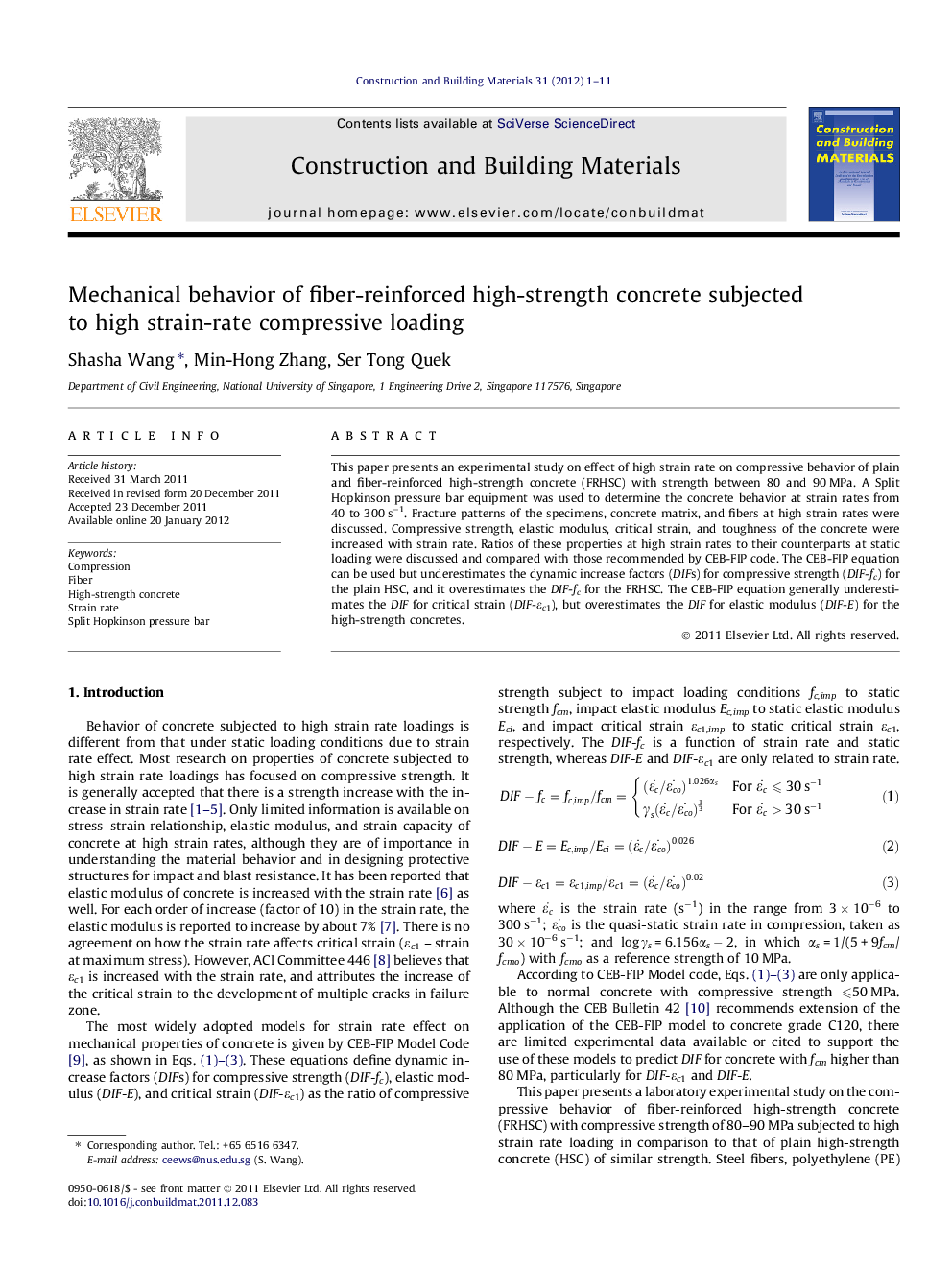| Article ID | Journal | Published Year | Pages | File Type |
|---|---|---|---|---|
| 258913 | Construction and Building Materials | 2012 | 11 Pages |
This paper presents an experimental study on effect of high strain rate on compressive behavior of plain and fiber-reinforced high-strength concrete (FRHSC) with strength between 80 and 90 MPa. A Split Hopkinson pressure bar equipment was used to determine the concrete behavior at strain rates from 40 to 300 s−1. Fracture patterns of the specimens, concrete matrix, and fibers at high strain rates were discussed. Compressive strength, elastic modulus, critical strain, and toughness of the concrete were increased with strain rate. Ratios of these properties at high strain rates to their counterparts at static loading were discussed and compared with those recommended by CEB-FIP code. The CEB-FIP equation can be used but underestimates the dynamic increase factors (DIFs) for compressive strength (DIF-fc) for the plain HSC, and it overestimates the DIF-fc for the FRHSC. The CEB-FIP equation generally underestimates the DIF for critical strain (DIF-εc1), but overestimates the DIF for elastic modulus (DIF-E) for the high-strength concretes.
► Strength fc, critical strain εc1, and elastic modulus E of the concrete increase with strain rate. ► CEB-FIP equations overestimate dynamic increase factor DIF of fc for fiber-reinforced concrete. ► CEB-FIP equations underestimate DIF of εc1, but overestimate DIF of E for high strength concrete. ► Toughness of the concretes based on the area under full σ–ε curve was increased with strain rate. ► 0.5% Steel fiber is better for concrete against impact than same amount of PE fiber or a hybrid of both.
